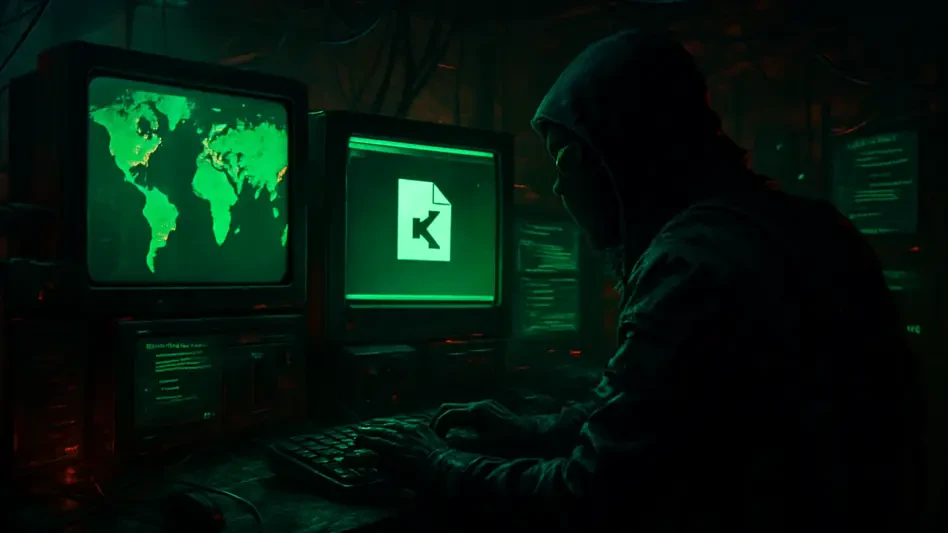In the dynamic world of cybersecurity, vulnerabilities pose significant challenges to maintaining secure systems. This reality was underscored by FortiGuard Labs’ recent discovery of a critical flaw, CVE-2025-32756, affecting several Fortinet products. Products such as FortiCamera, FortiMail, FortiNDR, FortiRecorder, and FortiVoice are compromised due to this vulnerability, which manifests as a stack-based buffer overflow within their administrative API. This flaw is particularly concerning due to its ability to permit unauthenticated remote code execution, thus becoming an attractive target for cyber attackers. This creates an urgent need for rapid response and mitigation measures to protect sensitive data housed within vulnerable systems.
Buffer Overflow Threats and Their Severity
A Deep Dive into Vulnerability Exploitation
The stack-based buffer overflow vulnerability is being exploited through the admin.fe CGI binary via a web server configured with mod_fcgid. This exploit method not only facilitates unauthorized access but does so with minimal risk of causing a complete server crash. Because of this method, the likelihood of successful exploitation increases significantly, allowing attackers to achieve their malicious objectives. The process was verified using a basic curl command that enabled access to the vulnerable endpoint. By utilizing this approach, attackers can circumvent typical security protocols, escalating the potential damage and accessibility of confidential data across affected systems.
The vulnerability’s critical aspect hinges on its manipulation of the APsCOOKIE session cookie’s AuthHash field during base64 decoding. The absence of a size check on AuthHash in the current version permits a buffer overflow as it allows attackers to provide an oversized base64-encoded string. Such a flaw opens doors for attackers to manipulate the system’s execution flow by overwriting crucial stack values. However, the updated version addresses this issue by enforcing size validation, a crucial step in mitigating the vulnerability. This remediation effort highlights the importance of fortifying coding practices and ensuring thorough checks are in place to prevent similar security lapses from recurring.
Implications for Security Architecture
The uncomplicated method of triggering this overflow without needing authentication makes it an easier route for attackers to escalate their privileges within the affected systems. The consistent proof-of-concept exploit illustrates how a specifically crafted AuthHash value effectively initiates the buffer overflow. Security platforms have already started integrating protective measures to cover this vulnerability. Despite the complexity of exploiting such vulnerabilities in general, the streamlined approach required here necessitates urgent attention from organizations relying on these Fortinet solutions.
FortiGuard Labs stresses the urgent need for users to update their products or employ alternative mitigations to secure their infrastructures. They’ve detailed indicators of compromise as well as actionable steps for mitigation given the active attempts at exploiting this flaw. This situation serves as a stark reminder of the necessity for vigilance and prompt action to bolster defenses against potential attacks. The adoption of stringent security frameworks and regular updates is non-negotiable to maintain a robust security posture.
The Broader Implications in Cybersecurity
The Urgent Need for Timely Security Practices
The recent vulnerability discovery underscores the growing complications posed by zero-day vulnerabilities in the cybersecurity landscape. These types of threats are compelling evidence of the persistent risks to which systems are exposed, emphasizing an ever-increasing urgency for timely and effective remediation strategies. The consensus among cybersecurity experts is that delays in addressing these vulnerabilities can lead to unauthorized access and exploitation, revealing sensitive data and undermining user trust.
Proactive measures such as regular software updates, real-time monitoring, and a commitment to ongoing education about emerging threats are emphasized as crucial components in combating such risks. Organizations are urged to integrate these into their security protocols effectively. This is not just about immediate patches but about enhancing overall security infrastructure, developing response strategies, and reinforcing policies so that they are more resilient to evolving threats.
Long-term Security Strategies
In today’s ever-evolving cybersecurity landscape, vulnerabilities present major hurdles in keeping systems secure. This was starkly highlighted by the recent identification of a severe flaw, labeled CVE-2025-32756, by FortiGuard Labs. This flaw affects a range of Fortinet products, including FortiCamera, FortiMail, FortiNDR, FortiRecorder, and FortiVoice. The vulnerability is tied to a stack-based buffer overflow discovered within the administrative API of these products. This issue is deeply concerning because it enables remote code execution without authentication, making it an especially attractive target for cybercriminals. In the face of potential threats, there is an imperative need for swift response and mitigation strategies. It is crucial to protect sensitive information residing in these compromised systems from malicious actors. Organizations using these Fortinet products should prioritize addressing this vulnerability to safeguard their data and maintain system integrity in the face of an increasing threat landscape.








